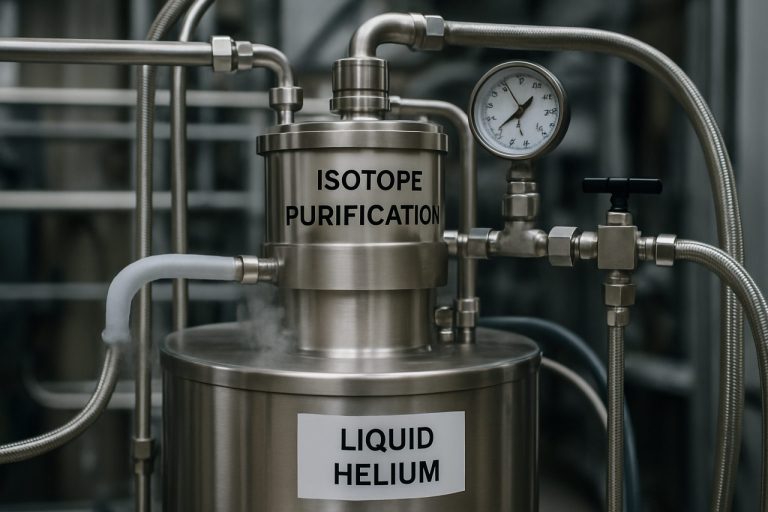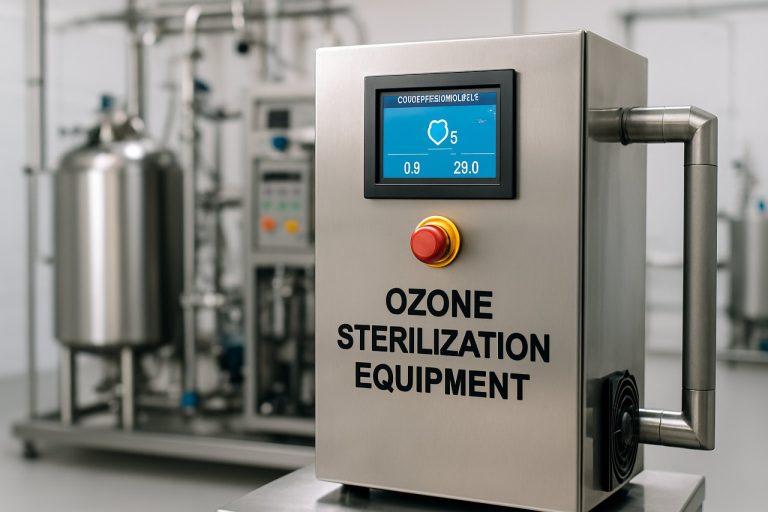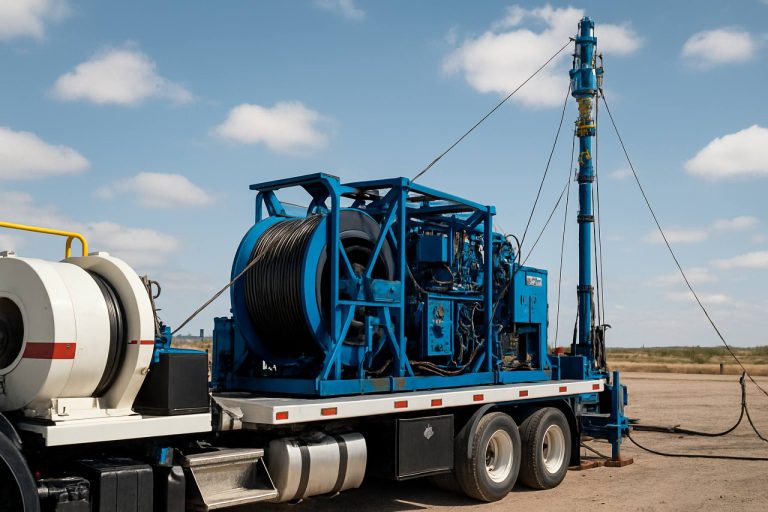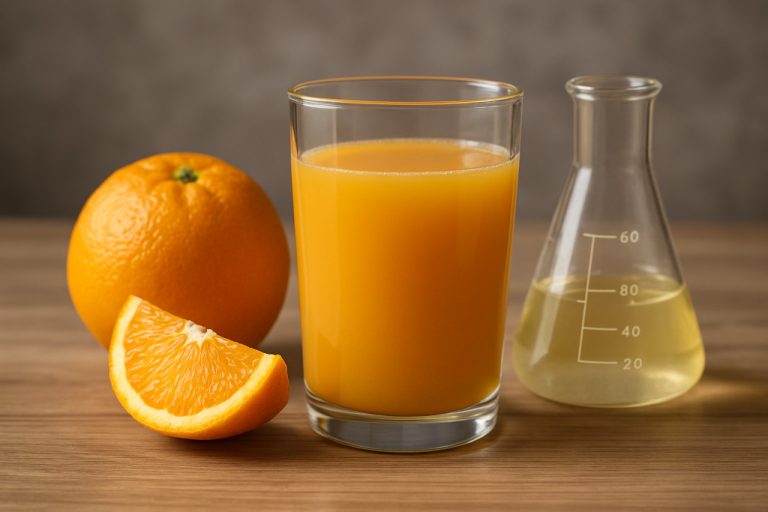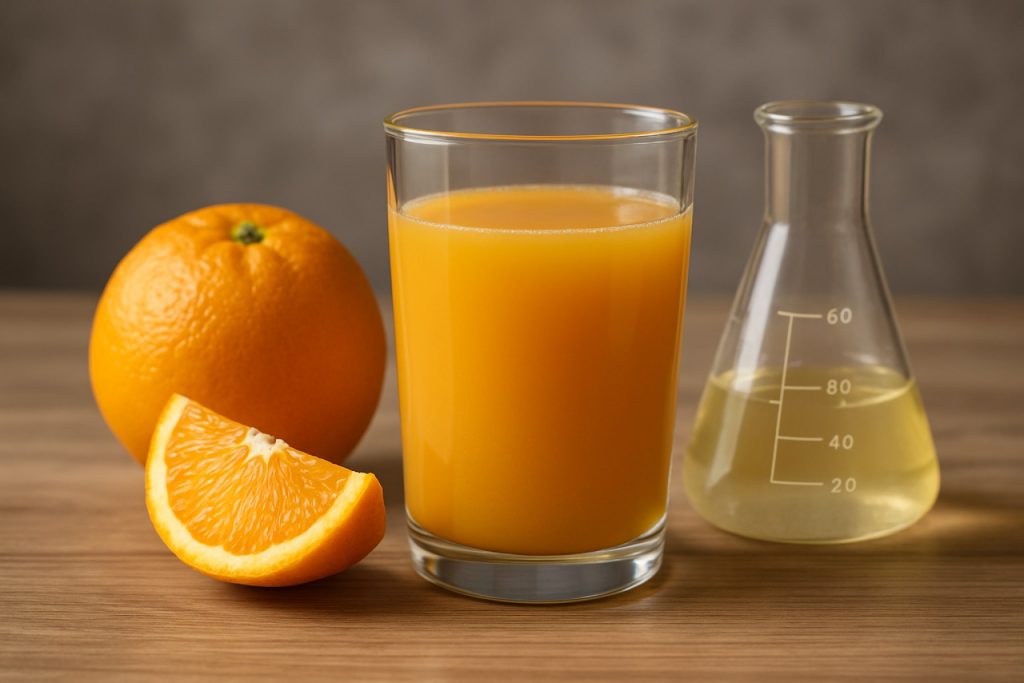
Table of Contents
- Executive Summary: 2025 Market Snapshot and Growth Highlights
- Key Enzyme Types and Their Applications in Juice Clarification
- Global Market Size and Forecast Through 2028
- Technological Advancements in Enzyme Production Processes
- Major Manufacturers and Their Strategic Initiatives
- Regulatory Standards and Quality Assurance (e.g. novozymes.com, dsm.com)
- Emerging Trends: Sustainability and Clean Label Solutions
- Regional Analysis: Leading and Emerging Markets
- Competitive Landscape and Innovation Pipelines
- Future Outlook: Opportunities, Challenges, and Disruptive Technologies
- Sources & References
Executive Summary: 2025 Market Snapshot and Growth Highlights
The global production of enzymes for juice clarification is set to experience robust growth in 2025, driven by technological advancements, increased demand for high-quality fruit juices, and the expansion of enzyme suppliers in key regions. Juice clarification enzymes—primarily pectinases, cellulases, and hemicellulases—are pivotal in breaking down complex polysaccharides, thereby improving juice yield, clarity, and stability. The market’s momentum is reflective of both longstanding consumption trends and new innovations in enzymatic formulations tailored for diverse fruit and vegetable juices.
Major industry players continue to expand their portfolios and invest in sustainable enzyme production processes. For example, Novozymes and DSM-Firmenich are introducing next-generation enzymes designed to function efficiently under a broader range of pH and temperature conditions, optimizing yields and reducing processing times for juice manufacturers. Innovations such as these are anticipated to lower operational costs and enhance product consistency, supporting the sector’s upward trajectory.
In 2025, the juice clarification enzyme sector is also witnessing increased adoption in emerging markets, notably in Asia-Pacific and Latin America, where expanding middle classes are fueling demand for processed and premium juice products. Manufacturers like AB Enzymes and Advanced Enzyme Technologies are actively scaling up their operations and building local partnerships to improve market access and distribution efficiency in these high-growth regions.
Sustainability and regulatory compliance are key focal points for 2025 and beyond. Companies are investing in greener production methods, such as fermentation using renewable raw materials, to align with evolving environmental standards and consumer expectations. For instance, Biospringer is among those emphasizing eco-friendly enzyme manufacturing processes, which are expected to become standard practice within the next few years.
Looking forward, the juice clarification enzyme market is poised for continued expansion, benefiting from the convergence of technological innovation, regional market development, and sustainability imperatives. The ongoing collaborations between enzyme producers and beverage manufacturers are likely to yield more tailored enzyme solutions, thereby supporting the production of clearer, tastier, and more stable juice products to meet global consumer demands through 2025 and the years ahead.
Key Enzyme Types and Their Applications in Juice Clarification
In 2025, the juice clarification industry continues to focus on optimizing enzyme production to enhance efficiency, yield, and quality in fruit juice processing. The primary enzymes utilized in juice clarification are pectinases (mainly polygalacturonase, pectin lyase, and pectin methylesterase), hemicellulases (such as xylanases), and cellulases. These enzymes are crucial for degrading cell wall components, reducing viscosity, and improving juice clarity and filterability.
Pectinases remain the most widely used enzyme group for commercial juice clarification. Their ability to break down pectic substances in fruit pulps facilitates the rapid release of juice and a significant reduction in turbidity. For example, Novozymes offers a range of pectinase-based enzyme preparations tailored for apple, grape, and citrus juice processing. These preparations are often blended with other enzymes to target specific fruit matrices and desired outcomes, such as cloud stability or maximized yield.
Cellulases and hemicellulases are increasingly incorporated into enzyme blends to complement pectinases, breaking down cellulose and hemicellulose in fruit cell walls. This trend is evident in the portfolio of IFF (formerly DuPont Nutrition & Biosciences), which formulates multi-enzyme solutions for juice clarification, enhancing extraction and reducing filtration time.
Recent advancements in enzyme production focus on the use of genetically modified microorganisms to achieve higher enzyme titers and improved specificity. Companies like AB Enzymes employ advanced fermentation technologies to produce robust and consistent enzyme products suitable for industrial-scale juice clarification. The adoption of microbial strains such as Aspergillus niger and Trichoderma reesei continues, supported by ongoing research into strain optimization and fermentation efficiency.
Sustainability and cost-effectiveness are driving the development of next-generation enzyme formulations. Enzyme manufacturers are focusing on producing highly concentrated, thermostable enzymes that reduce dosage requirements and processing times. This not only lowers production costs but also supports the global demand for environmentally responsible food processing technologies.
Looking ahead, the outlook for juice clarification enzyme production is marked by continued innovation in enzyme engineering, production scalability, and tailored applications for a wider range of fruit types. As consumer demand for high-quality, clear, and natural juices grows, enzyme producers are expected to further refine their offerings to meet evolving industry needs through 2025 and beyond.
Global Market Size and Forecast Through 2028
The global market for juice clarification enzyme production is poised for robust expansion through 2028, driven by increasing demand for high-quality, visually appealing juice products and the growing adoption of enzymatic processing in the beverage industry. As of 2025, leading enzyme manufacturers are investing in research and process optimization to meet the evolving needs of juice processors worldwide.
Key players such as Novozymes, DSM-Firmenich, and AB Enzymes are actively expanding their product portfolios for juice clarification, offering pectinases, cellulases, and hemicellulases tailored to various fruit types and processing conditions. These enzymes facilitate the removal of suspended solids, enhance juice yield, and improve clarity, thus responding to both consumer expectations and industrial efficiency goals.
Recent advances in enzyme formulation and delivery systems have enabled enzyme preparations that function efficiently at lower temperatures and broader pH ranges, supporting energy-efficient and sustainable processing. Companies such as IFF (formerly DuPont Nutrition & Health) have rolled out new enzyme blends designed for rapid clarification and filtration, directly addressing the throughput and cost control priorities of large juice producers.
Geographically, the Asia-Pacific region is emerging as the fastest-growing market, propelled by rising disposable incomes and a burgeoning juice processing sector in countries like China and India. This is corroborated by expansion announcements and local partnerships from major enzyme suppliers within these regions. In North America and Europe, the focus remains on innovation aligned with clean label and non-GMO trends, with companies such as Enzymes.bio introducing enzymes suitable for organic and allergen-free juice applications.
Looking ahead, the juice clarification enzyme sector is forecasted to grow at a compound annual growth rate (CAGR) in the high single digits through 2028, with market value projections reflecting heightened demand from both established and emerging juice markets. The ongoing integration of digital monitoring and process automation is expected to further accelerate enzyme adoption, as producers seek to optimize yields, reduce waste, and enhance product consistency.
Overall, the outlook for juice clarification enzyme production remains highly positive, with manufacturers and suppliers well-positioned to capitalize on the sector’s dynamic growth and the beverage industry’s shifting quality and sustainability priorities.
Technological Advancements in Enzyme Production Processes
The production of enzymes for juice clarification has seen significant technological advancements in recent years, with 2025 marking a period of accelerated innovation driven by both industry demand and sustainability goals. Historically, juice clarification relied on traditional pectinases, but current developments focus on enhancing enzyme specificity, activity, and process integration.
One key trend is the adoption of advanced fermentation techniques. Leading enzyme producers are leveraging improved strains of Aspergillus niger and Trichoderma reesei—microorganisms favored for their high pectinase yields—to increase production efficiency. For example, Novozymes has implemented optimized submerged fermentation processes that boost enzyme output while reducing energy and water consumption, directly addressing operational sustainability.
Genetic engineering is also playing a transformative role. The use of recombinant DNA technology allows for the creation of enzyme variants with tailored properties, such as improved thermal stability and broader pH tolerance, which are crucial for the diverse range of fruit juices processed globally. IFF (DuPont) has reported success in developing engineered enzyme blends that not only clarify juice more rapidly but also retain more nutritional and sensory characteristics, aligning with consumer demand for minimally processed beverages.
Process integration has become more sophisticated with the incorporation of membrane filtration and immobilized enzymes. Immobilization technology, where enzymes are attached to a solid support, is gaining traction for its ability to enable continuous processing and enzyme reuse. AB Enzymes is among the companies exploring immobilized pectinase systems, which can enhance process control, reduce costs, and lower environmental impact by minimizing enzyme waste.
Digitalization and data-driven process optimization are also reshaping enzyme production. Real-time analytics and smart manufacturing platforms, such as those implemented by BASF, allow precise monitoring of fermentation parameters and enzyme activity, resulting in higher consistency and product quality.
Looking ahead, the outlook for juice clarification enzyme production is characterized by continued investments in biotechnological innovation and process sustainability. Companies are expected to further collaborate with juice processors to develop bespoke enzyme formulations, integrate circular economy practices, and meet regulatory as well as consumer expectations for cleaner, greener production methods.
Major Manufacturers and Their Strategic Initiatives
In 2025, the juice clarification enzyme production sector continues to be shaped by a handful of global manufacturers deploying strategic initiatives to address rising demand, sustainability mandates, and evolving customer needs. Major players such as Novozymes, DSM-Firmenich, and DuPont Nutrition & Health (now part of IFF) continue to dominate the landscape, leveraging R&D and partnerships to drive innovation.
- Novozymes has reinforced its leadership through investments in their biotech manufacturing facilities, aiming for higher production efficiency and reduced environmental impact. In 2024–2025, Novozymes expanded its enzyme portfolio, introducing next-generation pectinases and hemicellulases designed for improved juice clarity, higher yield, and minimal off-flavors. Their focus on circular bioeconomy principles further supports sustainable sourcing and production methods (Novozymes).
- DSM-Firmenich has prioritized climate-smart enzyme production, emphasizing lower energy consumption and water use in their facilities. Their strategic initiative in 2025 includes the launch of enzyme blends tailored for specific fruit varieties, responding to regional preferences and raw material variations. DSM-Firmenich has also invested in customer support platforms, offering technical guidance to juice manufacturers for process optimization (DSM-Firmenich).
- DuPont Nutrition & Health (IFF) continues to scale up its enzyme innovation pipeline, focusing on rapid prototyping and collaborative R&D with leading juice processors. Their 2025 initiatives include the introduction of enzymes with enhanced thermostability and activity at lower pH levels, thus broadening their applicability to a wider range of fruit juices. The company is also actively investing in digitalization, utilizing process monitoring tools for customers to maximize enzyme efficacy and reduce waste (DuPont Nutrition & Health).
Looking ahead, these manufacturers are expected to intensify efforts in enzyme customization, sustainability, and digital integration. Strategic alliances with fruit processors and investments in green chemistry are projected to accelerate. With regulatory standards and consumer demand for clean-label, minimally processed beverages rising, major enzyme producers are well positioned to capitalize on these trends through continued innovation and operational excellence.
Regulatory Standards and Quality Assurance (e.g. novozymes.com, dsm.com)
Regulatory standards and quality assurance are pivotal in the production of juice clarification enzymes, especially as the global food and beverage sector continues to prioritize safety, transparency, and sustainability. In 2025, producers are increasingly required to align with evolving international guidelines established by regulatory authorities such as the U.S. Food and Drug Administration (FDA), the European Food Safety Authority (EFSA), and the Codex Alimentarius Commission. These bodies set forth stringent criteria for enzyme purity, absence of harmful residues, and traceability throughout the manufacturing process.
Enzyme manufacturers like Novozymes and DSM have adapted their quality management systems to comply with the latest food-grade enzyme requirements, including ISO 22000 and FSSC 22000 certifications. This includes robust hazard analysis and critical control point (HACCP) protocols, allergen management, and validated cleaning procedures to minimize risks of cross-contamination. For instance, Novozymes emphasizes its compliance with internationally recognized quality standards and regularly updates its product documentation to reflect regulatory changes, underscoring transparency and customer assurance.
Recent years have seen a marked increase in demand for enzymes produced via microbial fermentation, especially those derived from non-genetically modified organisms (non-GMO). This is in response to both regulatory preferences in key markets and heightened consumer awareness around labeling and product origin. Companies such as DSM highlight their adherence to non-GMO and clean-label expectations, ensuring their juice clarification enzymes meet the requirements of both established and emerging markets.
In 2025, digitalization is further shaping quality assurance. Advanced data management systems are being implemented by leading enzyme producers, enabling real-time monitoring, batch traceability, and rapid reporting to regulatory agencies. For example, documentation accompanying the shipment of juice clarification enzymes now routinely includes detailed Certificates of Analysis, safety data sheets, and proof of compliance with food additive regulations in the destination country. This trend is expected to intensify in the next few years, as authorities move towards harmonized digital documentation and global traceability standards.
- Regulatory focus on sustainability and environmental impact is prompting enzyme producers to document eco-friendly practices, including reduced water and energy usage during production (Novozymes).
- Ongoing harmonization of enzyme regulations in Asia-Pacific and Latin America is anticipated, which will broaden export opportunities but also require continuous adaptation of quality systems (DSM).
Overall, the regulatory landscape for juice clarification enzyme production in 2025 demands a proactive approach to quality assurance, with an outlook toward even greater transparency, digital integration, and global alignment over the coming years.
Emerging Trends: Sustainability and Clean Label Solutions
In 2025, the production of enzymes for juice clarification is witnessing a pronounced pivot toward sustainability and clean label solutions, a trend driven by both regulatory pressures and evolving consumer expectations. Manufacturers are increasingly prioritizing enzyme technologies that minimize environmental impact, utilize non-GMO sources, and support the production of juices free from synthetic additives and processing aids.
One major development is the adoption of microbial fermentation processes using renewable raw materials and optimized bioreactor systems, which significantly reduce water and energy consumption. For instance, Novozymes has introduced pectinase and cellulase enzyme blends produced through fermentation with highly characterized microorganisms, allowing for efficient clarification while aligning with clean label requirements. These enzyme solutions are tailored for fruit juice processors seeking to avoid chemical clarifiers and to streamline filtration, thereby reducing waste and improving process sustainability.
Additionally, enzyme manufacturers are investing in transparency and traceability throughout their supply chains. DSM-Firmenich emphasizes the use of food-grade, non-GMO strains for enzyme production, responding to juice brands’ demands for clear labeling and assurance of allergen-free, vegan-friendly processing aids. Their newly launched enzyme preparations in 2024 are designed to meet the requirements of both organic and conventional juice processors, reflecting a wider industry move toward certifications and third-party verifications.
Sustainability advances are also tied to improved process efficiency. Enzyme blends are being engineered for faster reaction times, lower dosages, and broader temperature and pH profiles. This reduces resource use during juice clarification, directly supporting processors’ sustainability goals. IFF (formerly DuPont Nutrition & Health) highlights the development of robust multi-enzyme complexes, which can reduce turbidity and viscosity more rapidly, cutting down on filtration steps and energy input.
Looking to the next few years, the outlook is for continued innovation in precision fermentation and enzyme engineering, further decreasing the reliance on animal-derived or chemically synthesized clarifiers. Partnerships between enzyme producers and juice companies are expected to intensify, focusing on co-creating tailored solutions that satisfy clean label, allergen-free, and reduced-carbon-footprint requirements. As both regulatory frameworks and consumer scrutiny tighten, these trends are likely to define the competitive landscape for juice clarification enzyme production through the remainder of the decade.
Regional Analysis: Leading and Emerging Markets
In 2025, the global landscape of juice clarification enzyme production is shaped by both established leaders and rapidly advancing emerging markets. The demand for high-quality, visually appealing fruit and vegetable juices continues to grow, with enzyme solutions—predominantly pectinases, cellulases, and hemicellulases—playing a pivotal role in enhancing juice yield, clarity, and stability. Regional dynamics are influenced by the maturity of the juice processing industry, raw material availability, technological capabilities, and regulatory frameworks.
Europe remains at the forefront of juice clarification enzyme production, driven by a combination of advanced biotechnology infrastructure and robust juice processing sectors, especially in countries like Germany, France, and Italy. Leading enzyme manufacturers such as Novozymes and DSM-Firmenich have long-standing operations in Europe, offering a wide portfolio of specialized enzyme blends tailored for juice clarification. The region’s stringent food safety regulations and consumer preference for natural, additive-free products further incentivize innovation in enzyme formulations.
North America also demonstrates significant enzyme production capabilities, with the U.S. serving as a hub for both research and large-scale manufacturing. Companies like DuPont (now IFF) deliver tailored enzyme solutions to the robust North American juice market, which is characterized by large-scale fruit and vegetable processing facilities and a growing trend toward premium, cold-pressed juices. The region benefits from strong university-industry collaborations and investment in process optimization.
Asia-Pacific is the fastest-growing region in juice clarification enzyme production, propelled by rapid industrialization, rising disposable incomes, and expanding juice consumption in countries such as China, India, and Japan. Local and multinational producers, including AB Enzymes and Enzymology Research Center, are expanding capacity and distribution networks to meet surging demand. China, in particular, is not only a significant consumer but also a growing producer of juice clarification enzymes, supported by favorable government policies and investments in biotechnology.
Latin America and the Middle East & Africa represent emerging opportunities. Brazil and Mexico are notable for their abundant fruit production, presenting a strong case for localized enzyme manufacturing and application. Regional players, often in partnership with global enzyme leaders, are introducing tailored solutions to address unique fruit varieties and local processing needs.
Looking ahead, regional growth will be influenced by the adoption of cleaner, more sustainable production processes and the increasing localization of enzyme manufacturing to reduce costs and improve supply chain resilience. Cross-regional collaboration and technology transfer are expected to play a key role in supporting emerging market growth, while established markets continue to focus on high-purity, specialized enzyme blends and regulatory compliance.
Competitive Landscape and Innovation Pipelines
The competitive landscape for juice clarification enzyme production in 2025 is characterized by robust activity among established enzyme manufacturers, strategic partnerships with beverage processors, and a strong focus on innovation pipelines addressing efficiency, specificity, and sustainability. Leading global players such as Novozymes, IFF (International Flavors & Fragrances), and AB Enzymes continue to dominate the market, supplying pectinases, cellulases, and hemicellulases for fruit juice clarification.
In 2025, product portfolios are expanding as enzyme producers respond to growing demand for cleaner-label juice products, improved extraction yields, and faster clarification times. For instance, Novozymes has unveiled enzyme formulations that target reduced processing time and energy use, with their latest pectinase blends supporting both batch and continuous juice clarification processes. Similarly, IFF has highlighted their range of beverage enzymes designed for high performance in a variety of fruit substrates, emphasizing tailored solutions for apple, citrus, and tropical fruit juices.
Innovation pipelines are marked by a dual focus: tailored enzyme cocktails specific to regional fruit varieties and advances in enzyme engineering for improved stability and reduced dosage requirements. AB Enzymes is investing in research to develop enzymes active at lower temperatures and wider pH ranges, addressing the needs of juice manufacturers aiming to preserve nutritional and sensory qualities while minimizing thermal processing.
Collaborations between enzyme suppliers and juice processors are intensifying. For example, Novozymes reports ongoing joint development projects with beverage companies to co-design enzyme solutions that meet specific clarifying and filtration challenges, reducing waste and maximizing yield. This trend is expected to accelerate as processors seek to optimize production economics and transparency in supply chains.
Looking ahead over the next few years, sustainability and regulatory compliance will shape R&D priorities. Companies are investing in enzymes derived from non-GMO microbial strains and biodegradable production processes, responding to evolving food safety standards and consumer preferences. Overall, the juice clarification enzyme sector is positioned for incremental but steady innovation, with competitive dynamics favoring those who can deliver both technical performance and demonstrable sustainability benefits.
Future Outlook: Opportunities, Challenges, and Disruptive Technologies
The future of juice clarification enzyme production is poised for significant evolution as the industry responds to shifting consumer demands, tightening regulations, and the rapid advancement of biotechnology. As of 2025, global demand for high-quality, clear juices continues to rise, especially in markets prioritizing natural and minimally processed beverages. This trend is compelling juice manufacturers to seek more efficient, sustainable, and customizable enzyme solutions for clarification processes.
Key producers such as Novozymes, Biospringer, and DuPont Nutrition & Health (part of IFF) are intensifying investments in research and pilot-scale innovations. Their focus lies in developing multi-activity enzyme blends—combinations of pectinases, cellulases, hemicellulases, and proteases—tailored for diverse fruit profiles and juice processing conditions. Enzyme formulations are being enhanced for improved thermal tolerance and activity at varying pH levels, enabling more flexible and robust industrial processes. For instance, Novozymes has recently highlighted enzyme solutions targeting increased juice yield and faster clarification, aiming to reduce processing time and operational costs.
One of the most disruptive trends is the emergence of enzyme production platforms leveraging advanced synthetic biology and precision fermentation. Companies are exploring genetically engineered microbial strains—yeasts, bacteria, and filamentous fungi—that can produce high-purity enzymes with specific characteristics, reducing the need for downstream processing and minimizing allergenic risks. The shift towards microbial and fermentation-derived enzymes also aligns with the sector’s sustainability goals, as these processes typically require less land and water compared to traditional extraction from plant or animal sources. DSM Food Specialties is an example of a provider pursuing these biotechnological approaches to expand enzyme portfolios and improve traceability.
Despite these opportunities, several challenges persist. Regulatory scrutiny on genetically modified organisms (GMOs) and enzyme labeling remains stringent, especially in Europe and parts of Asia, potentially constraining market adoption. Additionally, the cost and complexity of scaling up new enzyme production technologies may delay commercialization for smaller manufacturers. Intellectual property (IP) protection and competitive differentiation will be essential, as enzyme formulations become more specialized and proprietary.
Looking ahead, industry stakeholders anticipate continued integration of digitalization and automation in enzyme manufacturing—using data analytics, process monitoring, and AI to optimize yields and consistency. Partnerships between enzyme producers and juice processors are likely to intensify, fostering collaborative innovation tailored to emerging fruit varieties and evolving consumer preferences. As these trends unfold, the juice clarification enzyme sector is expected to remain at the forefront of food biotechnology, balancing efficiency, sustainability, and regulatory compliance.
